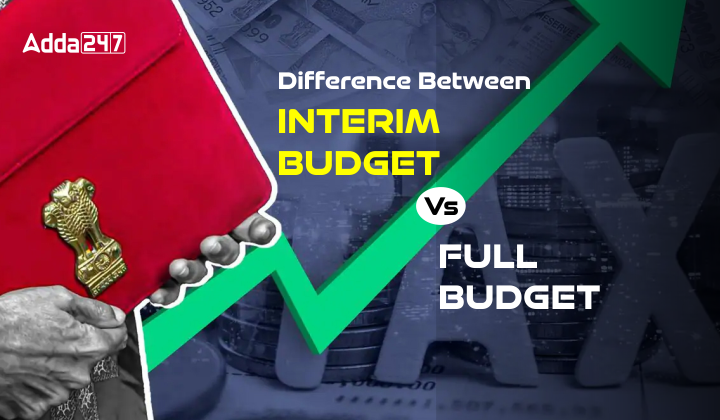As the political landscape gears up for the 2024 Lok Sabha elections in India, discussions surrounding the country’s financial planning take center stage. Central to this discourse are the distinctions between the interim budget and the full union budget, two crucial fiscal documents that guide the nation’s economic trajectory.
How is Interim Budget Different from Full Time Budget?
An Interim Budget and a Full-time Budget serve distinct purposes in the financial governance of a nation. While both are crucial components of fiscal management, they differ significantly in scope and duration. An Interim Budget is a temporary measure presented by the government to meet the financial requirements until a new government assumes office. Conversely, a Full-time Budget is a comprehensive financial plan outlining revenue, expenditure, and policy priorities for the entire fiscal year, reflecting the government’s long-term vision and objectives.
What is an Interim Budget?
The interim budget serves as a temporary financial plan presented by the incumbent government when its term is ending or during a transition of power. It is a stopgap arrangement designed to ensure the smooth functioning of the government until a new administration assumes office.
Features of an Interim Budget
Here are the features of an Interim Budget:
- Timing and Purpose: Typically presented at the beginning of the financial year, the interim budget focuses on essential expenditures necessary to sustain governmental operations until a new government presents a comprehensive budget.
- Scope and Content: In contrast to the comprehensive nature of the full union budget, the interim budget usually sidesteps major policy announcements or new schemes. Its primary objective is to maintain continuity and stability rather than introduce significant changes in fiscal policy.
- Approval and Duration: The interim budget typically receives parliamentary approval for a limited period, usually a few months, until the new government unveils its financial agenda.
What is a Full Budget?
In contrast, the full union budget represents the comprehensive financial roadmap of the ruling government for the entire fiscal year. It encompasses all aspects of fiscal policy, including revenue generation, expenditure allocation, and policy initiatives.
Features of Full Budget
Here are the features of full budget:
- Annual Presentation: Presented annually by the ruling government, the full union budget delineates the financial priorities and goals for the upcoming fiscal year, covering expenditures, developmental projects, and ongoing schemes.
- Parliamentary Approval: Unlike the interim budget, which garners approval for a short interim period, the full union budget requires parliamentary endorsement for the entire fiscal year, underscoring its significance as the principal fiscal document of the government.
- Comprehensive Nature: The full union budget is characterized by its detailed and comprehensive presentation, encompassing a wide array of economic sectors and policy domains. It serves as a tool for the government to articulate its vision and strategy for economic growth and development.
Difference Between Interim Budget and Full Budget
Here is the difference between Interim budget and full budget:
| Difference Between Interim Budget and Full Budget | ||
| Basis of Difference | Interim Budget | Full Budget |
| Timing | Presented just before General elections | Annually presented in the Parliament |
| Vote on Account | Passed without discussion in Lok Sabha | Passed after complete discussions in Lok Sabha |
| Financial Coverage | Includes previous year’s income and expenses, plus a few months of expenses until the new government takes over | Divided into two parts: Previous year’s income and expenses, and government’s plan for raising and utilizing funds |
| Duration | Covers approximately 2 to 4 months of the fiscal year | Encompasses the entire fiscal year |
| Content | Provides a summary of previous year’s income and expenses | Provides detailed information on previous year’s income and expenses |
| Source of Income | Details of income sources not provided | Describes ways of raising funds through taxes and other measures |
| Focus | Primarily focused on transitional expenses | Focuses on social welfare measures and overall development of the nation |




 Which Glacier is the Source of the Brahm...
Which Glacier is the Source of the Brahm...
 Which City of Germany is Known as the Gr...
Which City of Germany is Known as the Gr...
 Which Peak is Known as the Five Treasure...
Which Peak is Known as the Five Treasure...







